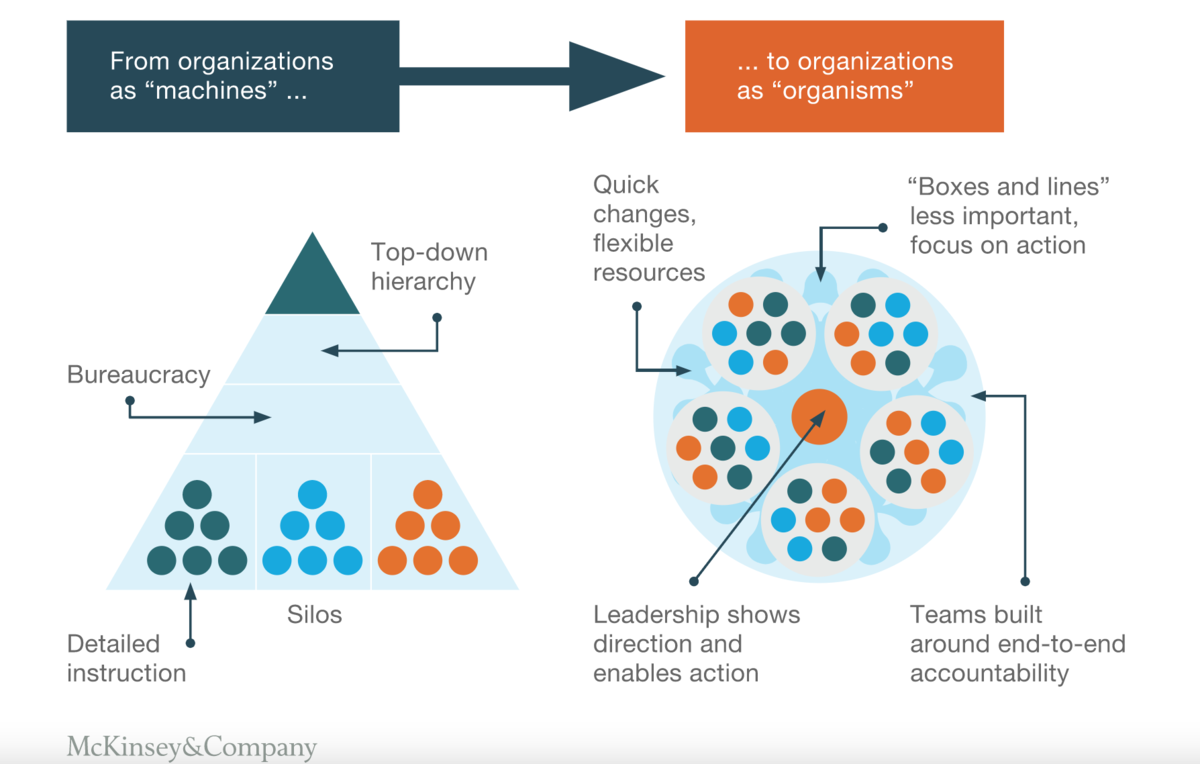#HRTrending - Advantages Of The Circle Management Model
According to McKinsey & Company, instead of implementing the usual triangle management model, the circle management model allows leaders to assign personnel to projects that are best fit for each individual's capacity and skills.

The team of 50 global experts of Mc Kinsey Agile Tribe said that although the triangle model has brought success to a great number of corporations, this model is outdated in today's fast-changing environment.
The circle model requires employees to quickly sharpen themselves to adapt
The circle management models are widely adopted by major businesses such as Google, Haier, Tesla, Whole Foods, etc. According to McKinsey & Company, instead of implementing the usual triangle management model, the circle management model allows leaders to assign personnel to projects that are best fit for each individual's capacity and skills. This model perceives businesses as a big circle and projects are the small inner circle.
Ms. Nguyen Thi An Ha, Head of Strategic Partnership at Talentnet, said that the circle model is the most advantageous to major corporates as it can better fit with the need of diversified experience of new generation of workers, especially Gen Z. Furthermore, this model also aid businesses in utilizing resources and productivity, improving adaptability of both workforce and the business amid uncertainties. In the future, the circle model will gradually replace the triangle model. To be ready for the change, workers need to upgrade this skill “combo”:
Upgrade yourself to become a multitasking employee:
The circle model requires employees to be dynamic to adapt to new challenges and opportunities quickly. McKinsey Agile Tribe also estimates that businesses will benefit significantly from training employees to multitask. The benefits can range from increasing profits, stock prices to reducing operating costs. As a result, businesses are increasingly prioritizing the use of multitasking employees at work. If workers cannot catch up with this trend, they may feel stressed, lose direction and experience disrupt in work-life balance.

To help employees become multitasking, businesses need to organize training programs on expertise, project management and how to apply technology to work. On the side of employees, they need to practice general thinking by constantly updating social information, knowledge of various fields to avoid being lagged behind when transferred to other departments.
From “solo players” to “team players”
According to Salesforces, 86% of project failures are due to poor teamwork and communication. With the circle model, teamwork on projects is a must so that each individual will be integrated into the community. Workers are advised to actively express their opinions and share difficulties with others. At the same time, put aside conservative ego, and learn to be receptive to opinions from multiple perspectives. When being transferred to various project teams, it is essential to be able to accept and adapt to a diversity of leadership styles since you will be working with multiple leaders simultaneously.
Teamwork is even more important when employees work from home since it helps strengthening co-worker relationships. Therefore, employees need to hone their teamwork skills by improving their ability to exchange work through communication applications and actively participate in online activities of the company.

No one can predict the next changes in the field of human resources. However, whether in "time of peace" or amid the pandemic, employees need to diversify their skills set and expertise to improve their competitive positioning and advance in their careers.